Raevenlord
News Editor
- Joined
- Aug 12, 2016
- Messages
- 3,755 (1.18/day)
- Location
- Portugal
| System Name | The Ryzening |
|---|---|
| Processor | AMD Ryzen 9 5900X |
| Motherboard | MSI X570 MAG TOMAHAWK |
| Cooling | Lian Li Galahad 360mm AIO |
| Memory | 32 GB G.Skill Trident Z F4-3733 (4x 8 GB) |
| Video Card(s) | Gigabyte RTX 3070 Ti |
| Storage | Boot: Transcend MTE220S 2TB, Kintson A2000 1TB, Seagate Firewolf Pro 14 TB |
| Display(s) | Acer Nitro VG270UP (1440p 144 Hz IPS) |
| Case | Lian Li O11DX Dynamic White |
| Audio Device(s) | iFi Audio Zen DAC |
| Power Supply | Seasonic Focus+ 750 W |
| Mouse | Cooler Master Masterkeys Lite L |
| Keyboard | Cooler Master Masterkeys Lite L |
| Software | Windows 10 x64 |
Kickstarted pieces of tech aren't usually covered here, but knowing the community, I'd say this is an interesting take on traditional cooling systems. I, for one, know how much I loathe the sound of spinning fans - but I think I'm in the majority here. And this case by Calyos promises to put an end to all of those, in a much cleaner, environmental-friendly way that doesn't involve dipping your thousands of dollars worth of hardware in something resembling cooking oil.
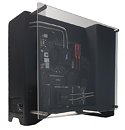
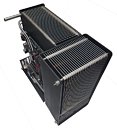
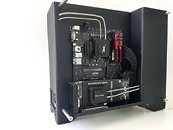
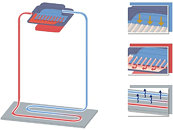
The production chassis is designed by France's modding duo WaterMod, which improved upon the original open-frame concept design both in terms of performance and aesthetics. The usage of Phase Change cooling through two cooling blocks - one for the GPU, another for the CPU) makes away with fans, pumps, water, and any other assorted cooling techniques that involve calling upon the decibel gods.
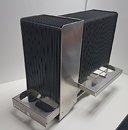
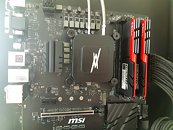

At time of writing, 124,490€ have already been pledged out of a 150,000€ goal. The entrance fee for this chassis is 549€ (at time of writing, only 94 out of a total of 200 units being sold at this "Early Bird" Special price are available; the "Super Early Bird" level at 479€ is all sold out already). For that pricing, you can shave from your investment any amount of fans, AIOs, or custom liquid-cooling loops that might be thinking of investing in - those are rendered obsolete by this chassis.
Whispers: and if you want to spend around 7,999€ for one of these babies so you can create your own design from scratch... they even give you the chance to do so.
View at TechPowerUp Main Site




The production chassis is designed by France's modding duo WaterMod, which improved upon the original open-frame concept design both in terms of performance and aesthetics. The usage of Phase Change cooling through two cooling blocks - one for the GPU, another for the CPU) makes away with fans, pumps, water, and any other assorted cooling techniques that involve calling upon the decibel gods.



At time of writing, 124,490€ have already been pledged out of a 150,000€ goal. The entrance fee for this chassis is 549€ (at time of writing, only 94 out of a total of 200 units being sold at this "Early Bird" Special price are available; the "Super Early Bird" level at 479€ is all sold out already). For that pricing, you can shave from your investment any amount of fans, AIOs, or custom liquid-cooling loops that might be thinking of investing in - those are rendered obsolete by this chassis.
Whispers: and if you want to spend around 7,999€ for one of these babies so you can create your own design from scratch... they even give you the chance to do so.
View at TechPowerUp Main Site
Last edited:







 )
)



